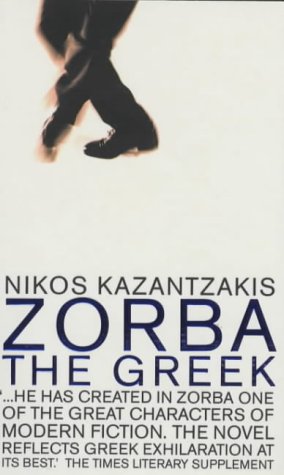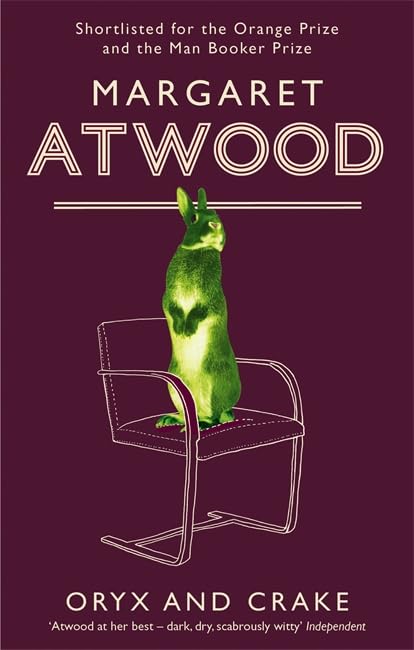some thoughts on Blood and Roses, Being in Being, and Don Quixote
I recently finished Don Quixote (the new Edith Grossman translation). I read about half of it in my teens, before getting sidetracked, and decided that the 400th anniversary was a good time to have another go at it.
DQ is a great idea for a character, and Sancho Panza has his moments as well, and it stands up pretty well for something written in 1605, but… to be honest, I found it repetitive and a bit tedious. It felt like the same joke over and over again, and the characters didn’t develop as much as they could have. It’s also, considering that it’s famous above all as character-based humour, very literary and very rooted in its period. I’m unfamiliar with the romances that it is parodying, and that distances the whole thing. I also found it odd that, in a book which pokes fun at someone for believing in the literal truth of an earlier literary tradition, there are pastoral episodes about nobles going off into the woods to live as shepherds which seem to be treated unironically. It’s a familiar literary convention, of course, from Shakespeare (As You Like It, I think), but I found it hard to tell whether the pastoral episodes really were unironic or if I was just missing the joke. Perhaps it’s better in Spanish.
Being in Being is one of the volumes of Robert Bringhurst’s translations of Haida oral poetry – in this case the collected works of Skaay of the Qquuna Qiighawaay (The Haida are the native inhabitants of Haida Gwaii – i.e. the Queen Charlotte Islands of the Pacific North-West). I find the poems generally quite intirguing, for their insight into the culture and the oddness (or differentness) of the literary conventions, but quite difficult to grapple with. The narrative logic of them wasn’t apparent to me, and even with Bringhurst’s notes and having read the introductory volume (A Story as Sharp as a Knife) I was aware of how much I was missing. I’m sure all sorts of details were supposed to carry some kind of significance that passed me by. There are all sorts of appealing aspects, though, like the way that the characters (most of whom are spirit beings) put on the skin of a person or animal to become that animal; or the way that, if an object is half blue-green and half reddish-brown, that means it will turn eveything upside down (literally or metaphorically) because those are the colours of the mallard, which up-ends to eat.
The stories are quite messy, structurally, very geographically rooted (many of the characters are the spirits attached to particular places in Haida Gwaii), and it seems, quite flexible according to who’s telling them and the occasion. I imagine that they give some idea of what the Greek myths would have been like when they were originally told, but we get them through the filter of hundreds of years of literacy and a couple of millennia of artistic response. As a result, not only do they tend to have a sheen of white marble about them, but they tend to be very tidy, canonical versions with very clear narrative logic. It may be that the assumption – that one early myth-telling tradition will be much like another – is a false one anyway. Perhaps the hunter-gatherers of the Peloponnese had a quite different way of telling stories.
One thing – after having watched Ray Mears making a birch-bark canoe from scratch on TV the other day, I did at least have a clearer idea of things like splitting cedar and tying things with spruce roots. Now if he could just make a program about fishing for halibut and hunting whales from a dug-out canoe using traditional tools.
Blood and Roses is a book I’m reading about the Paston family from Norfolk. They are famous in medievalist circles because a large selection of their personal correspondence has survived from the C15th. I have a copy of the selcted letters, but never got very far with it. Helen Castor has used them to produce a more conventional bit of history writing, supplying the context and helping you keep track of all the people (including the three different John Pastons). It’s still quite dry and repetitive – they spend most of their time up to their necks in legal disputes about land ownership – but once I got into it I found it quite involving. They were newly wealthy gentry; William P was a miller’s son made good as a successful lawyer, and the book mainly conerns his son and grandsons. So not exactly toilers in the fields, but still ‘ordinary people’ in that they weren’t important historical figures. It was the time of the Wars of the Roses, of course, and very turbulent. You do get a sense of how all of society – including the law – was tied into a system of patronage and influence, and that influence could be erratic, capricious, subject to political expedience, and corrupt. And of course, in a time of civil war, people could gain and lose influence extremely rapidly. And the Pastons were strong characters whose personalities emerge clearly from their letters.

